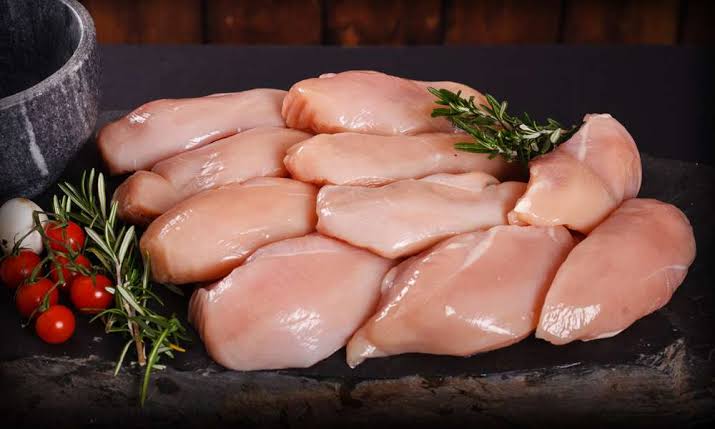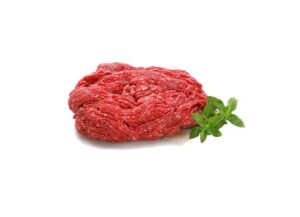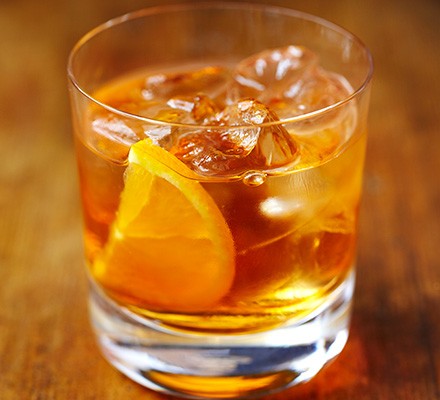About chicken breast:-

Chicken breast is a lean cut of meat taken from the pectoral muscles of a chicken. It is one of the most popular and widely consumed parts of the chicken, valued for its versatility, mild flavor, and relatively low fat content. Here are some key points about chicken breast:.
Characteristics:
Lean Protein: Chicken breast is low in fat and high in protein, making it a popular choice for those seeking a healthy diet.
Boneless or Bone-In: Chicken breasts can be sold with or without the bone. Boneless chicken breasts are more common and convenient, especially for quick cooking.
Skinless or Skin-On: Chicken breasts are often sold without the skin to reduce fat content, but skin-on breasts are also available, which can add flavor and moisture when cooking.
Mild Flavor: The mild taste of chicken breast makes it a versatile ingredient that can be paired with a wide variety of seasonings, marinades, and sauces.
Why we love chicken breast:-

- Lean Protein: Chicken breast is a great source of lean protein, which is essential for muscle growth, repair, and overall body function. It provides a high amount of protein with relatively low fat content.
- Versatility: Chicken breast can be cooked in many ways—grilled, baked, sautéed, stir-fried, or poached. Its mild flavor makes it a versatile ingredient that can be seasoned or marinated to suit a variety of dishes.
- Health Benefits: Because it’s low in fat and high in protein, chicken breast is often recommended in diets aimed at weight loss or maintenance. It’s also a good source of vitamins like B6 and niacin, which support metabolism and energy production.
- Affordability and Availability: Chicken breast is widely available and generally affordable, making it a convenient choice for meals.
- Low Calorie Content: For those watching their calorie intake, chicken breast is a go-to option because it provides a filling and nutritious meal without excessive calories.
Variation of chicken breast:-

Chicken breast can be prepared in countless variations, making it a staple in many cuisines. Here are some popular variations:
1. Grilled Chicken Breast
- Cajun-Spiced Grilled Chicken: Marinate the chicken in a blend of Cajun spices, olive oil, and lemon juice, then grill for a smoky, flavorful dish.
- Herb-Marinated Grilled Chicken: Use a mixture of fresh herbs like rosemary, thyme, and basil with garlic and olive oil for a fragrant and tasty grilled chicken.
2. Stuffed Chicken Breast
- Spinach and Feta Stuffed Chicken: Butterfly the chicken breast and stuff it with a mixture of sautéed spinach, feta cheese, and garlic, then bake until golden.
- Mushroom and Cheese Stuffed Chicken: Fill the chicken with a mixture of sautéed mushrooms, onions, and cheese (like mozzarella or cheddar) for a rich and savory dish.
3. Baked Chicken Breast
- Lemon Garlic Baked Chicken: Marinate in lemon juice, garlic, and olive oil, then bake until tender and juicy, garnishing with fresh parsley.
- Parmesan-Crusted Chicken: Coat the chicken in a mixture of breadcrumbs and Parmesan cheese before baking for a crispy, flavorful crust.
4. Pan-Seared Chicken Breast
- Lemon Butter Chicken: Pan-sear the chicken breast and finish with a lemon butter sauce for a simple yet elegant dish.
- Honey Garlic Chicken: Sear the chicken and then coat it in a sweet and savory honey garlic sauce for a sticky, delicious meal.
5. Chicken Breast in Sauces
- Chicken Marsala: Pan-sear the chicken and simmer it in a rich Marsala wine sauce with mushrooms for a classic Italian dish.
- Chicken Alfredo: Serve sliced chicken breast over fettuccine pasta with a creamy Alfredo sauce for a comforting, hearty meal.
6. Salads and Wraps
- Chicken Caesar Salad: Grill the chicken, slice it, and serve over romaine lettuce with Caesar dressing, croutons, and Parmesan cheese.
- Chicken Wrap: Use grilled or baked chicken breast slices in a wrap with fresh veggies, avocado, and a light dressing for a quick and healthy meal.
7. International Flavors
- Chicken Tikka: Marinate the chicken in yogurt and spices like garam masala, cumin, and turmeric, then grill or bake.
- Teriyaki Chicken: Marinate the chicken in a homemade or store-bought teriyaki sauce, then grill or bake and serve with rice and vegetables.
8. Slow Cooker Chicken
- BBQ Pulled Chicken: Cook chicken breast in a slow cooker with BBQ sauce until it’s tender enough to shred, then use it in sandwiches or over rice.
- Chicken Curry: Slow-cook the chicken in a fragrant curry sauce made with coconut milk, curry powder, and spices for a comforting meal.
Read this also:- Meatloaf recipe How to make chicken soup , Egg roll recipe
Key component of chicken breast:-

The key components of chicken breast are:
1. Protein
- Chicken breast is primarily composed of protein, which makes up about 31 grams per 100 grams of cooked chicken breast. Protein is essential for building and repairing tissues, supporting immune function, and maintaining muscle mass.
2. Water
- Water is a major component of chicken breast, making up around 65-75% of its weight. This high water content helps keep the meat moist and tender during cooking.
3. Fat
- Chicken breast is low in fat, with most of the fat content found in the skin. When the skin is removed, the fat content is significantly reduced, making it a lean source of protein. The fat that remains is mostly unsaturated, which is considered healthier for the heart.
4. Vitamins
- Vitamin B6: Important for brain development and function, and for converting food into energy.
- Niacin (Vitamin B3): Supports metabolism and is essential for DNA repair and the production of certain hormones.
- Vitamin B12: Vital for nerve function and the production of red blood cells, though in smaller amounts compared to dark meat.
5. Minerals
- Phosphorus: Essential for the formation of bones and teeth, and helps the body make ATP, a molecule used for energy storage.
- Selenium: An antioxidant that helps protect cells from damage and plays a role in thyroid hormone metabolism.
- Zinc: Important for immune function, protein synthesis, and wound healing.
6. Amino Acids
- Chicken breast contains all nine essential amino acids, making it a complete protein source. These amino acids are crucial for various bodily functions, including muscle repair, enzyme production, and hormone synthesis.
7. Collagen
- While chicken breast is not as high in collagen as other parts of the chicken (like the skin or wings), it still contains some collagen, which contributes to the texture and juiciness of the meat.
8. Carbohydrates
- Chicken breast is virtually carbohydrate-free, which makes it a suitable option for low-carb and ketogenic diets.
Main ingredients for making chicken breast:-

- Chicken Breast: The primary ingredient, usually boneless and skinless.
- Olive Oil or Butter: Used for cooking the chicken, adding flavor, and keeping it moist.
- Salt: Enhances the natural flavor of the chicken.
- Pepper: Adds a bit of spice and depth to the seasoning.
Optional Ingredients for Flavor:
- Garlic: Freshly minced or powdered, for a robust flavor.
- Lemon Juice: Adds brightness and acidity.
- Herbs: Such as rosemary, thyme, parsley, or basil, for added flavor.
- Spices: Paprika, cumin, or Italian seasoning for additional flavor profiles.
Ingredients:
- Chicken Breast: 2 pieces, about 200 grams each (400 grams total)
- Olive Oil: 15 grams (about 1 tablespoon)
- Salt: 3 grams (about 1/2 teaspoon)
- Black Pepper: 1 gram (about 1/4 teaspoon)
- Garlic (minced): 5 grams (about 1 clove)
- Lemon Juice: 15 grams (about 1 tablespoon)
- Butter: 15 grams (optional, for added flavor)
Optional Herbs and Spices:
Thyme (fresh or dried): 2 grams (about 1/2 teaspoon)
Paprika: 2 grams (about 1/2 teaspoon)
Processs of making :-

- Prepare the Chicken:
- If the chicken breasts are thick, place them between two sheets of plastic wrap and gently pound them to an even thickness of about 2 cm (1/2 inch) for even cooking.
- Season the Chicken:
- Rub the chicken breasts with olive oil (15 grams) on both sides.
- Season with salt (3 grams) and black pepper (1 gram). If using, sprinkle paprika (2 grams) and thyme (2 grams) over the chicken.
- Preheat the Pan:
- Heat a large skillet over medium heat. Add the remaining 15 grams of olive oil or butter (15 grams) to the pan.
- Cook the Chicken:
- Add the chicken breasts to the hot pan. Cook for about 5-6 minutes on each side, or until the chicken reaches an internal temperature of 74°C (165°F).
- During the last 2 minutes of cooking, add the minced garlic (5 grams) and lemon juice (15 grams) to the pan. Spoon the sauce over the chicken as it finishes cooking.
- Rest and Serve:
- Remove the chicken from the pan and let it rest for 5 minutes. This helps the juices redistribute within the meat.
- Serve the chicken breast with your favorite sides, such as steamed vegetables, rice, or a fresh salad.
Advantage of eating chicken breast:-

Chicken breast offers several advantages, making it a popular choice for many people:
1. High in Protein
- Chicken breast is an excellent source of lean protein, which is essential for building and repairing muscles, supporting immune function, and maintaining overall health. A 100-gram serving typically provides around 31 grams of protein.
2. Low in Fat
- Chicken breast, especially when skinless, is low in fat compared to other cuts of chicken or other meats. This makes it a healthier option for those looking to reduce their fat intake or maintain a healthy weight.
3. Low in Calories
- Due to its low fat content, chicken breast is also relatively low in calories. This makes it a great option for those on calorie-restricted diets or those looking to lose weight.
4. Rich in Vitamins and Minerals
- Chicken breast contains important vitamins and minerals such as B vitamins (B6 and niacin), phosphorus, and selenium. These nutrients play vital roles in energy production, metabolism, bone health, and immune function.
5. Versatile in Cooking
- Chicken breast is incredibly versatile and can be prepared in a wide variety of ways—grilled, baked, sautéed, stir-fried, or poached. It absorbs flavors well, making it suitable for a range of cuisines and dishes.
6. Supports Weight Management
- The high protein and low calorie content of chicken breast make it filling and satisfying, which can help reduce overall calorie intake and support weight management efforts.
7. Easy to Prepare
- Chicken breast cooks relatively quickly and can be used in simple, quick meals or more elaborate recipes. It’s also easy to find in most grocery stores and can be prepared in large batches for meal prepping.
8. Supports Muscle Growth
- Due to its high protein content, chicken breast is a popular choice among athletes, bodybuilders, and anyone looking to build or maintain muscle mass.
9. Mild Flavor
- The mild flavor of chicken breast makes it a blank canvas for a wide range of seasonings, marinades, and sauces. It pairs well with virtually any spice or herb, making it adaptable to different culinary styles.
10. Affordable
- Chicken breast is generally affordable and widely available, making it a cost-effective source of high-quality protein.
Disadvantage of eating chicken breast:-

While chicken breast is a popular and healthy choice for many, it does have some potential disadvantages:
1. Low Fat Content
- Disadvantage: Chicken breast is very low in fat, which can sometimes result in a drier texture, especially if overcooked.
- Consideration: This can be mitigated by cooking methods and incorporating healthy fats into the meal.
2. Potential for Dryness
- Disadvantage: Without proper cooking techniques, chicken breast can become dry and tough.
- Consideration: Using methods like brining, marinating, or cooking with a sauce can help retain moisture.
3. Nutrient Imbalance
- Disadvantage: Chicken breast is low in certain nutrients like iron and zinc compared to other cuts of chicken or red meats.
- Consideration: Ensure a balanced diet by including a variety of protein sources and nutrient-rich foods.
4. Cost
- Disadvantage: Chicken breast can sometimes be more expensive than other cuts of chicken like thighs or drumsticks.
- Consideration: Look for sales or buy in bulk to reduce costs.
5. Flavor Profile
- Disadvantage: The flavor of chicken breast can be relatively mild compared to more flavorful cuts like chicken thighs.
- Consideration: Enhance flavor with marinades, spices, and cooking techniques.
6. Environmental Impact
- Disadvantage: The production of chicken, like other animal agriculture, has an environmental impact related to land use, water consumption, and greenhouse gas emissions.
- Consideration: Be mindful of sourcing and consider reducing meat consumption or exploring more sustainable options.
7. Health Concerns
- Disadvantage: Processed chicken products, like pre-seasoned or pre-cooked chicken breast, can contain added sodium, preservatives, and other additives.
- Consideration: Opt for fresh, unprocessed chicken breast and cook it yourself to control ingredients and reduce sodium intake.
1. In the Refrigerator
For Raw Chicken Breast:
- Why: Refrigeration keeps raw chicken breast fresh and safe for short-term storage.
- How: Place the raw chicken breast in its original packaging or in a sealed container or plastic wrap. Store it in the coldest part of the refrigerator, ideally at or below 4°C (40°F). Raw chicken breast can be stored in the refrigerator for up to 1-2 days.
For Cooked Chicken Breast:
- Why: Proper refrigeration helps maintain the quality and safety of cooked chicken breast.
- How: Allow the chicken breast to cool to room temperature (about 20-30 minutes) before storing. Place it in an airtight container or wrap it tightly in plastic wrap or aluminum foil. Cooked chicken breast can be stored in the refrigerator for up to 3-4 days.
**2. In the Freezer
For Raw Chicken Breast:
- Why: Freezing is ideal for long-term storage and helps prevent freezer burn.
- How: Wrap the chicken breast tightly in plastic wrap or aluminum foil. Place it in a freezer-safe bag or airtight container. Label the bag with the date and contents. Raw chicken breast can be frozen for up to 9 months.
For Cooked Chicken Breast:
- Why: Freezing cooked chicken breast preserves its quality and extends its shelf life.
- How: Allow the chicken breast to cool completely before freezing. Wrap it tightly in plastic wrap or aluminum foil, or place it in a freezer-safe container or bag. Label with the date and contents. Cooked chicken breast can be frozen for up to 2-3 months.
**3. Thawing Chicken Breast
- In the Refrigerator: Thaw frozen chicken breast in the refrigerator overnight. This is the safest method and helps maintain quality.
- In Cold Water: For faster thawing, place the chicken breast in a sealed plastic bag and submerge it in cold water. Change the water every 30 minutes. Cook immediately after thawing.
- In the Microwave: Use the defrost setting on your microwave to thaw chicken breast. Cook immediately after thawing as some parts may start to cook during the process.
**4. Tips for Storing Chicken Breast
- Avoid Overlapping: For raw chicken, avoid overlapping pieces to ensure even cooling and prevent contamination.
- Use Airtight Containers: For both raw and cooked chicken, using airtight containers or wrapping tightly helps prevent odor absorption and freezer burn.
- Label and Date: Always label and date containers or bags to keep track of how long the chicken has been stored.
How can I ensure chicken breast stays juicy?
To keep chicken breast juicy, try brining it before cooking, use marinades, and avoid overcooking. Cook it at a moderate temperature, and let it rest for a few minutes after cooking to allow the juices to redistribute.
2. How long can I store raw chicken breast in the refrigerator?
Raw chicken breast can be stored in the refrigerator for up to 1-2 days. If you need to store it longer, freeze it
How long can I store cooked chicken breast in the refrigerator?
Answer: Cooked chicken breast can be stored in the refrigerator for up to 3-4 days. Ensure it is stored in an airtight container to maintain freshness.





